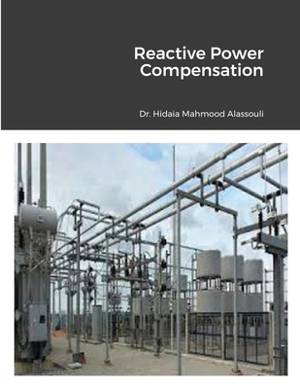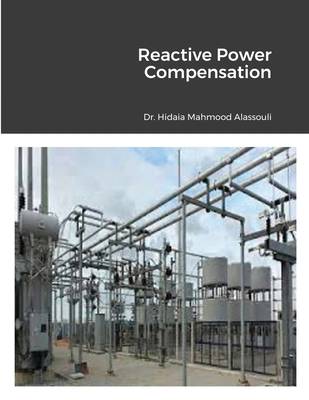
- Retrait gratuit dans votre magasin Club
- 7.000.000 titres dans notre catalogue
- Payer en toute sécurité
- Toujours un magasin près de chez vous
- Retrait gratuit dans votre magasin Club
- 7.000.0000 titres dans notre catalogue
- Payer en toute sécurité
- Toujours un magasin près de chez vous
Description
Power systems have two components of apparent power: active and reactive power. Both components are necessary for functioning of electrical systems. The active power is the average power absorbed by the resistive load. The reactive power is the measure of energy exchange between the source and reactive power of load. Energy storage devices do not dissipate or supply power, but exchange power with the rest of system.
Active power is the one that is converted to other forms of energy in the load yet reactive power is only responsible for magnetizing purposes. Power factor is a ratio depicting how much of the power supplied is real. The reactive current contribute in the value of the overall magnitude of current in transmission lines causing unnecessarily high line currents and low power factor.
Since a low power factor means higher amount of apparent power need to be supplied by the utility company, thus the company must also use bigger generators, large transformers and thicker transmission/distribution lines. This requires a higher capital expenditure and operational cost which usually result in the cost being passed to the consumer.
In this research, we seek to identify the effects of a low power factor on Swaziland Electricity Company's power supply system and recommend possible solutions to the problem. The results are useful in determining how to optimally deliver power to a load at a power factor that is reasonably close to unity, thus reducing the utility's operational costs while increasing the quality of the service being supplied.
The book consists from the following chapters:
- ABSTRACT
- CHAPTER 1: INTRODUCTION
- CHAPTER 2: LITERATURE REVIEW
- CHAPTER 3: RESEARCH METHODOLOGY
- CHAPTER 4: DATA COLLECTION
- CHAPTER 5: RESULTS AND ANALYSIS OF THE SIMULATION MODEL
- CHAPTER 6: BENEFITS OF POWER FACTOR CORRECTION
- CHAPTER 7: FINDINGS, RECOMMENDATIONS AND CONCLUSIONS
- REFERENCES
- APPENDIXES
- Appendix A: Load Profiles
- Appendix B - Substations
- Appendix C: Simulation Results
Spécifications
Parties prenantes
- Auteur(s) :
- Editeur:
Contenu
- Nombre de pages :
- 120
- Langue:
- Anglais
Caractéristiques
- EAN:
- 9781716728136
- Date de parution :
- 15-12-20
- Format:
- Livre broché
- Format numérique:
- Trade paperback (VS)
- Dimensions :
- 216 mm x 279 mm
- Poids :
- 294 g

Les avis
Nous publions uniquement les avis qui respectent les conditions requises. Consultez nos conditions pour les avis.






